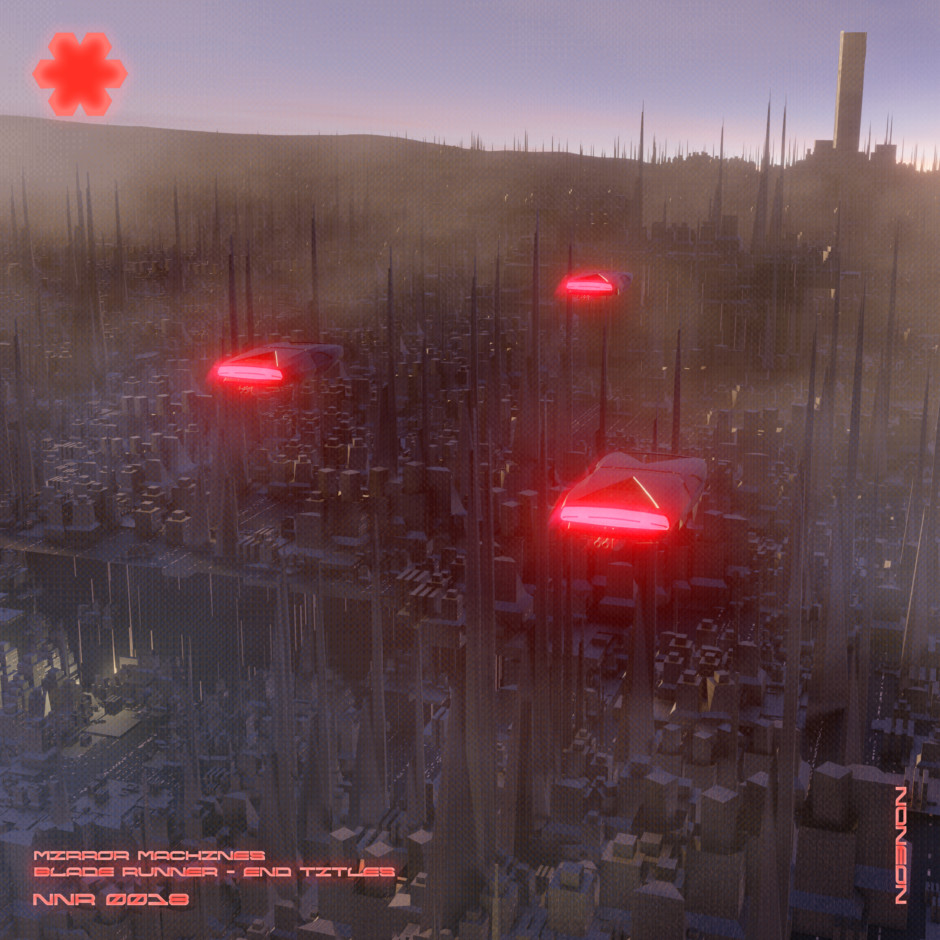Jeremy Dawson and Chad Petree, best known as Mirror Machines, have just shared their latest sonic outing with the release of their own remix of ‘Blade Runner (End Titles)’. The new drop is already available to stream and purchase via HNTR’s No Neon label, and follows up on debut releases via Lane 8’s This Never Happened and Anjunadeep, while Mirror Machines recreates the same rig Vangelis used to record the iconic piece, reimagining it under a darker, mysterious light.
To celebrate the drop of their remix of ‘Blade Runner (End Titles)’, Mirror Machines invites EG into the studio for 5 advanced tips:
1. The ultimate relationship: Kick and the Bassline
We like to avoid making basslines that have notes that land on the kick…especially if the pitch of the bass is similar to the pitch of the kick. If your bass line doesn’t dodge around the kick, you can copy your bass line track to a new track and then carve the bottom end out of each note that lands on a kick – then delete the rest. Then go back to the original bass track and delete those same notes.
2. Editing and Reshaping your transients
Schaack Audio Technologies’ Transient Shaper 2 is a great plug for adding or subtracting attack and release to hat samples. This plug also helps to play around with the pitch of each hat track to avoid overloading one frequency/note too hard.
3. Always use reference tracks for an overall EQ outlook
it’s healthy to have a reference track or 2 in the sonic ballpark of the project you’re working on.
it’s easy to lose perspective of the overall EQ/sound after you’ve been zoomed in on each track and looping sections over and over. helps to zoom back out and have a listen to your reference, and reset your brain to hearing the overall EQ/sound again. Even if it’s your own. It’s also great to have a solid pair of headphones for dialing in/detailing and fixing crossfade edits etc. Audeze’s LCD-XC are what we have found to be the most ACCURATE headphones on the market right now.
4. The living and breathing character of actual hardware analog, FM, and wavetable synthesizers
When you have a piece of hardware that is actually VOLTAGE controlled, then you are moving bits of electricity through oscillators, filters, op-amps, and envelope generators. You are creating and molding electricity into sound by changing and altering its frequency among other things. We are 100% hardware, zero soft synths, and the payoff is magic all around. The price is time, as it’s incredibly slow working with the big old birds we use. For us, it’s absolutely worth it. Your track will come alive, your melody will sing, and your drums will bite and sting.
So that you aren’t cash-stung, here are some affordable options for you to start since a lot of the key vintage pieces are thousands and thousands of dollars:
The Novation AFX Station RIPS for around $500 ish. It’s a good learner piece, easy to save sounds, won’t break down, and fits in your backpack. For a little more dough you can also find a used Prophet 8 or the later Rev2 for under $1200 as well. If you want to start vintage, I would suggest the Sequential Circuits Six-Trak… It’s a single oscillator VCO analog with the same Curtis CEM-3340 chip that is in the old Prophet 5s, the big old Oberheim OB series, etc. You can get one for around $750 and sounds incredible. Also, the 1976 Korg Delta rips as a stringer and an amazing bass line box for about the same money. The Delta has an incredible 24db filter on it that’s unmatched. So once you have an analog synth and you get time on the knobs and sliders and you learn what happens when you adjust your envelope decay, you learn what a ring modulator is and what it sounds like, etc, etc .. and then you go back to, let’s say, your Arturia V collection. You will have a completely new experience with the soft synths because now you have learned what all of these features actually mean and do. Hands-on learning is how our brains work. If you are mainly on soft synths try combining real synths with the software. The analogs will add the extra warmth and nuances that are missing in the software to complete the patch you are trying to get without having to add 12 processing hog plug-ins to get your soft synth to cut or sound real.
5. Melodies Forever
So if you are a worker in any genre of dance or electronica and you are wanting to lean into something more melodic, here are some helpful ways to help get the brain to enter what we want to call “the flow”, where you can connect with emotions and put together something that feels good in your track. This also triggers your listener driving down the road to feeling something real as well.
- Learn a primary instrument. This means either taking piano or guitar lessons, or even a string like a violin. You can either do this on youtube or IRL. Understanding basic knowledge of where things fit together can help you get quicker in the melodic writing process and come up with interesting chords that wouldn’t normally fit together finger picking on white keys. It’s important to know that you don’t HAVE to take any lessons. But you do need to spend time not turning your shakers up and down and just PERFORM. Load up a pad or a lead and just get comfortable playing until it is. Do an hour a day and you will see improvement.
- Listen to music that makes you feel something. Important that it’s ALL music. Yes, that Above & Beyond track or that big room banger from 2012 makes you feel something, but I think you should keep going back on your timeline. What song did you scream and cry to when you first got dumped? When someone left for the other side? When you met “the one” for the 39489th time? Go back and listen to THAT song. Try to understand what is happening that is triggering the emotion. Is it the lyric? the drums? the arrangement? All together? Let the music that moved you in your life become embedded in your mind. Because really all we are doing as songwriters is simply rearranging the hundreds of thousands of songs we have heard since we were kids.
- Minor chords. Learn to use them. Learn their strength to take something fluffy and make it powerful with just one simple note change. Read chord charts, learn what minors go with majors, and don’t be afraid to allow your track to get an edge or get dark… You can always mirror reflect with your lyric or with a dynamic change in the next section of your arrangement.

Mirror Machines’ remix of ‘Blade Runner (End Titles)’ is out now. Purchase your copy here.








